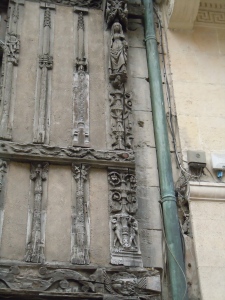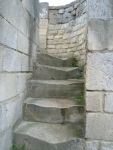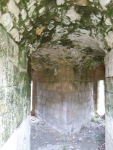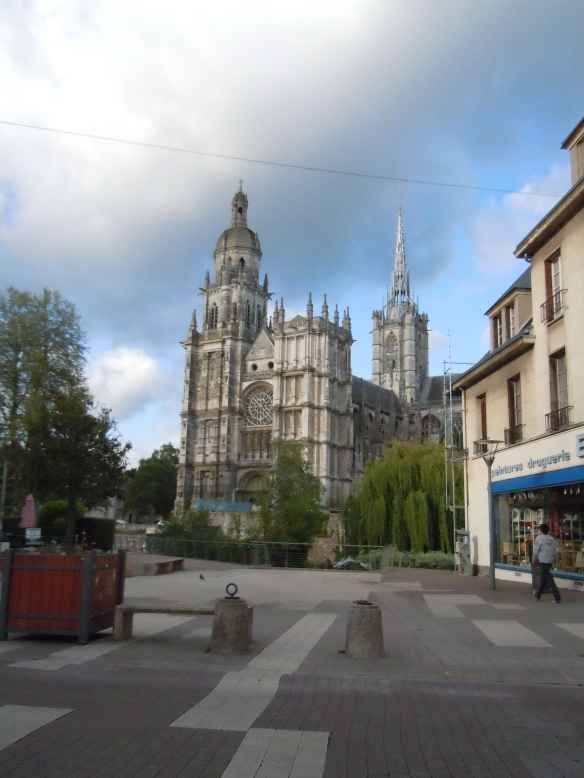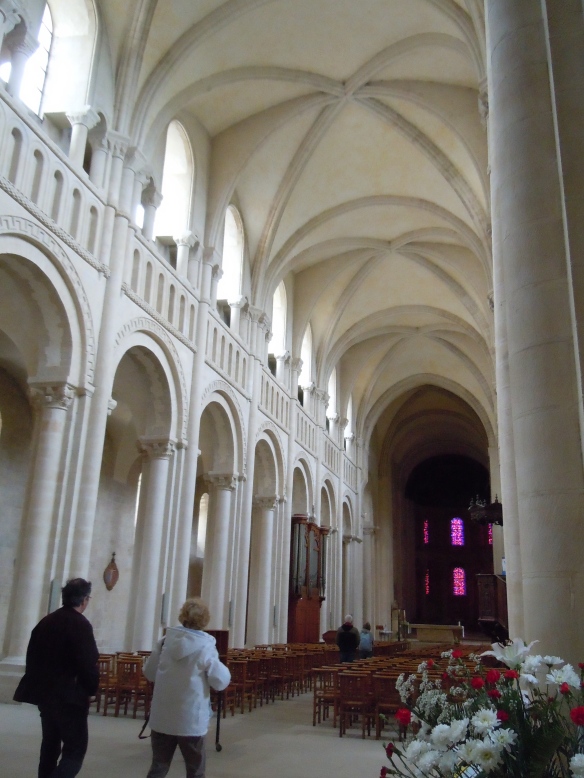Amici, I fear I have been increasingly neglectful of this blog. Other things have been occupying my mind and my time. I haven’t progressed through half my trip yet, though! How silly.
One of my favourite things to do in Europe was to walk through the streets alone with only a sketch of an idea where I was going. In Caen, after viewing Matilda’s church and the great fortress, I was pretty keen on finding William’s abbey. The weather was not especially congenial, as I’ve mentioned before, but it felt like an authentic Norman experience and I am no stranger to rain having grown up in a coastal city.
There are several things that caught my attention as I made my way to the abbey, and I will display a few below, but what truly delighted me was a building dating from the early Renaissance with a period wood façade. Among the stone buildings, it stuck out like a sore thumb. I will copy out what the plaque said in English:
Built at the beginning of the 16th century, these two houses are particularly noteworthy for their decoration which juxtaposes flamboyant Gothic and Renaissance style. As stone is abundant in Caen, house fronts were rarely timber-framed. The left-hand house belonged to a rich Caen merchant, Michel Mabré, an alderman of the town in 1509.
The detailing is marvellous:
About the windows:
I’m amazed it’s lasted so long:
 Continuing my walk, I passed by Notre-Dame-de-Froiderue, a church whose foundation dates to before AD 1000, which was rebuilt in the 12th and 14th centuries and has seen many changes since then. The exterior has suffered quite a bit, whether by inclement weather or by human agency (quite possibly the former), and the stained glass windows have been lost.
Continuing my walk, I passed by Notre-Dame-de-Froiderue, a church whose foundation dates to before AD 1000, which was rebuilt in the 12th and 14th centuries and has seen many changes since then. The exterior has suffered quite a bit, whether by inclement weather or by human agency (quite possibly the former), and the stained glass windows have been lost.
Some medieval faces still remain, however:
Alright, I’m exhausted (seriously, these photos take forever to upload and I am a terribly impatient person). That’s it for today, except one curious thing I found on the Rue Froide side of the church (which road, by the way, appears on charters dating to the twelfth century!):


